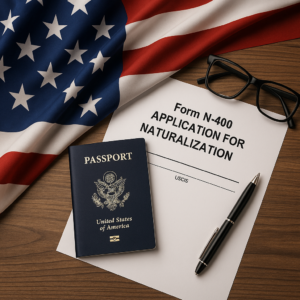The United States Citizenship and Immigration Services (“USCIS”) has announced that lawful permanent residents may receive temporary evidence of their lawful permanent resident status by mail rather than having to physically visit a field office to receive an Alien Documentation, Identification and Telecommunication (“ADIT”) stamp (also known as an I-551 stamp).
Lawful permanent residents are entitled to evidence of status and may require temporary evidence of their status in the form of an ADIT stamp if:
- They do not have their Green Card; or
- Their Form I-90, Application to Replace Permanent Resident Card (“Green Card”), Form I-751, Petition to Remove Conditions on Residence, or Form N-400, Application for Naturalization, is still pending adjudication and their Green Card and extension notice has expired.
Oddly, this announcement does not apply to EB-5 investor lawful permanent residents who have filed Form I-829, Petition by Investor to Remove Conditions on Permanent Resident Status.
When lawful permanent residents call the USCIS Contact Center to request temporary evidence of status, an immigration services officer will verify their identity, physical mailing address, and whether that address can receive UPS or FedEx express mail. They will then either schedule an in-person appointment for the lawful permanent resident, if needed, or submit a request to the USCIS Field Office to issue the ADIT stamp. If an in-person appointment is not needed, the USCIS Field Office will mail a Form I-94 with ADIT stamp, DHS seal, and a printed photo of the lawful permanent resident obtained from USCIS systems. The USCIS has the discretion to determine the validity period of the ADIT stamp based on the lawful permanent resident’s situation (not to exceed one year, unless specified otherwise by regulation or policy).
Some lawful permanent residents will still need to appear in person at a USCIS Field Office to receive temporary evidence of their status, including those who have urgent needs, do not have a usable photo in USCIS systems, or whose address or identity cannot be confirmed.
The new process will allow USCIS to issue temporary evidence of lawful permanent resident status in a timely way without requiring a scheduled appointment at the field office, thereby reducing the burden on applicants and increasing availability of Field Office resources.
If you have questions about U.S. visas or immigration, contact us at info@enterlinepartners.com and speak with a U.S. immigration attorney in Ho Chi Minh City, Manila and Taipei.
Copyright 2023. This article is for information purposes only and does not constitute legal advice. This article may be changed with or without notice. The opinions expressed in this article are those of Enterline and Partners only.
ENTERLINE & PARTNERS CONSULTING
Ho Chi Minh City, Vietnam Office
Suite 601, 6th Floor, Saigon Tower
29 Le Duan Street
Ben Nghe Ward, District 1
Ho Chi Minh City, Vietnam
Tel: +84 933 301 488
Email: info@enterlinepartners.com
Facebook: Enterline & Partners – Dịch vụ Thị thực và Định cư Hoa Kỳ
YouTube: @EnterlineAndPartnersConsulting
Website: http://enterlinepartners.com
Manila, Philippines Office
Tel: +63 917 543 7926
Email: info@enterlinepartners.com
Facebook: Enterline and Partners Philippines
Website: https://enterlinepartners.com/language/en/welcome/
Copyright 2023. This article is for information purposes only and does not constitute legal advice. This article may be changed with or without notice. The opinions expressed in this article are those of Enterline and Partners only.




